-
London police use smartphones, social network to identify rioters

The rioters in London — and now, in other British cities — have been using Blackberries to outmaneuver the police; communicating via BlackBerry instant-message technology, as well as by social networking sites like Facebook and Twitter, the rioters repeatedly signaled fresh target areas to those caught up in the mayhem; RIM has now agreed to cooperate with Scotland Yard to turn over protestors using the service to coordinate their assaults; the police is also releasing CCTV images of the rioters to a group using face recognition technology to identify and condemn rioters; the police is also using Flickr, Tublr, and Twitter to spot and identify participants in the riots
-
-
Undergraduate student overcomes major hurdle to invisibility cloak
An undergraduate student has overcome a major hurdle in the development of invisibility cloaks by adding an optical device into their design which not only remains invisible itself, but also has the ability to slow down light; the innovation open up the possibility for a potential invisibility cloak wearer to move around amongst ever-changing backgrounds of a variety of colors
-
-
Towing icebergs to provide fresh water for parched regions

A third of the world’s population — more than two billion people — lives without access to clean drinking water, and studies show that the situation will only get worse; a French innovator has an idea: towing icebergs from the Greenland and Antarctica to regions most in need of fresh water; a computer simulation shows this solution to be viable and affordable
-
-
Solar-based method to provide safe water
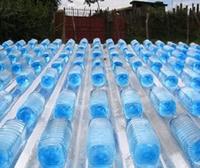
A revolutionary low-cost technique that uses sunshine to provide safe drinking water; solar disinfection (SODIS) of drinking water is an effective way of preventing water-borne diseases such as cholera, dysentery or polio — especially important in developing countries, where safe drinking water is often a precious rarity
-
-
U Maryland students design record-breaking helicopter
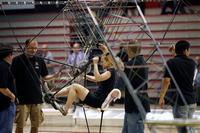
University of Maryland students flew past a world record after their human-powered helicopter hovered more than twelve seconds inside a campus building; the team’s goal is to win the Sikorsky Prize, a $250,000 reward given by the American Helicopter Society; in order to win, a human-powered helicopter must fly at least thirty seconds, hover at least three meters above ground, and not drift outside a ten-meter square
-
-
DHS "pre-crime" detectors draw criticism
A plan by DHS officials to use automated machines to identify people before they commit a criminal or terrorist act is drawing sharp criticism from privacy advocates; DHS is currently developing intention detectors under the Future Attributer Screening Technology (FAST) program; the FAST security checkpoints are outfitted with a sophisticated suite of sensors that are designed to identify several physiological indicators like heart rate or the steadiness of a person’s gaze
-
-
Beachball-like observation UAV developed
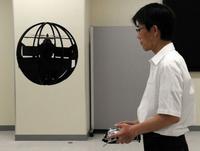
A beach ball-size drone can fly down narrow alleys, hover on the spot, take off vertically, bounce along the ground like a soccer ball — all the time transmitting live images from a video camera; it can travel above traffic or spy on a target through a window — and can also be used in search and rescue in disaster zones, where it could fly through buildings and even up and down stairways
-
-
Innovative biosensor for rapid virus field tests
Relying on a novel DNA-based bio-chemo-physical conversion method, a new bio-detection device is able to detect harmful bacteria, such as E. coli, salmonella, and staphylococcus, on site, within thirty minutes; it can be adapted to cover such deadly viruses as SARS, H5N1 flu, and swine flu viruses; it can also be designed to monitor possible biological attack from anthrax, smallpox, cholera, and more
-
-
Making runways safer

Airplanes undergo significant stresses during take-off and landing, and parts often become detached, putting subsequent runway users at risk; until now, airport staff have had to monitor runways without technical assistance — an activity that is prone to errors; a new radar system is set to increase safety at airports
-
-
Market forces to help reduce emission, increase storage of CO2
New computer modeling work shows that by 2100, if society wants to limit carbon dioxide in the atmosphere to less than 40 percent higher than it is today, the lowest-cost option is to use every available means of reducing emissions — including using forests to store carbon
-
-
New coatings show promise as flame retardants
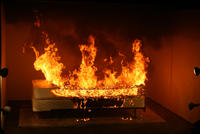
Ignition of soft furnishings account for about 5 percent of residential fires, and the consequences are disproportionately high; these fires are responsible for a third of fire-caused deaths of civilians and 11 percent of property losses due to fires in homes; NIST and Texas A&M researchers developed novel carbon nanofiber-filled coatings which outperformed conventional flame retardants by at least 160 percent and perhaps by as much as 1,130 percent
-
-
New device identifies unknown liquids instantly
Materials scientists and applied physicists have invented a new device that can instantly identify an unknown liquid; the 3D-nanostructured chip offers a litmus test for surface tension (and doubles as a carrier for secret messages); the researchers are currently developing more precisely calibrated chips and conducting field tests with government partners for applications in quality assurance and contaminant identification
-
-
Solving cold case by recovering old fingerprints
Researchers are developing a novel method for recovering old fingerprints using gold-antibody nanoparticles; the new fingerprinting method that could make it possible to recover previously unusable or undetected prints from old evidence and from surfaces long considered too difficult by crime scene investigators
-
-
Listening to the sound of bullets
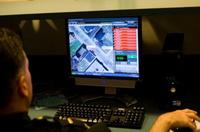
ShotSpotter systems relies on a system of acoustic sensors to identify the location from which a shot has been fired; the alerts are immediately conveyed to police dispatchers, 911 operators, and sometimes to officers in the field via laptops in patrol cars; the system includes a computer program which displays a comprehensive bird’s-eye view of the area, marking the location of the incident with a red dot and indicating the time and number of rounds fired
-
-
Research inspires robotics design for medicine, military
A pathogen that attacks the small intestines of humans and animals is serving as the inspiration for developing robots that can fight disease and aid in military operations; ror 250 years, scientists have tried to understand how the microorganism is able to attach to a multitude of surfaces and swim in harsh environments — enabling it to infect many kinds of species while most parasites have specific hosts
-
More headlines
The long view
A Shining Star in a Contentious Legacy: Could Marty Makary Be the Saving Grace of a Divisive Presidency?
While much of the Trump administration has sparked controversy, the FDA’s consumer-first reforms may be remembered as its brightest legacy. From AI-driven drug reviews to bans on artificial dyes, the FDA’s agenda resonates with the public in ways few Trump-era policies have.
Risk Assessment with Machine Learning
Researchers utilize geological survey data and machine learning algorithms for accurately predicting liquefaction risk in earthquake-prone areas.
Foundation for U.S. Breakthroughs Feels Shakier to Researchers
With each dollar of its grants, the National Institutes of Health —the world’s largest funder of biomedical research —generates, on average, $2.56 worth of economic activity across all 50 states. NIH grants also support more than 400,000 U.S. jobs, and have been a central force in establishing the country’s dominance in medical research. Waves of funding cuts and grant terminations under the second Trump administration are a threat to the U.S. status as driver of scientific progress, and to the nation’s economy.
The True Cost of Abandoning Science
“We now face a choice: to remain at the vanguard of scientific inquiry through sound investment, or to cede our leadership and watch others answer the big questions that have confounded humanity for millennia —and reap the rewards.”
Bookshelf: Smartphones Shape War in Hyperconnected World
The smartphone is helping to shape the conduct and representation of contemporary war. A new book argues that as an operative device, the smartphone is now “being used as a central weapon of war.”
New Approach Detects Adversarial Attacks in Multimodal AI Systems
New vulnerabilities have emerged with the rapid advancement and adoption of multimodal foundational AI models, significantly expanding the potential for cybersecurity attacks. Topological signatures key to revealing attacks, identifying origins of threats.
